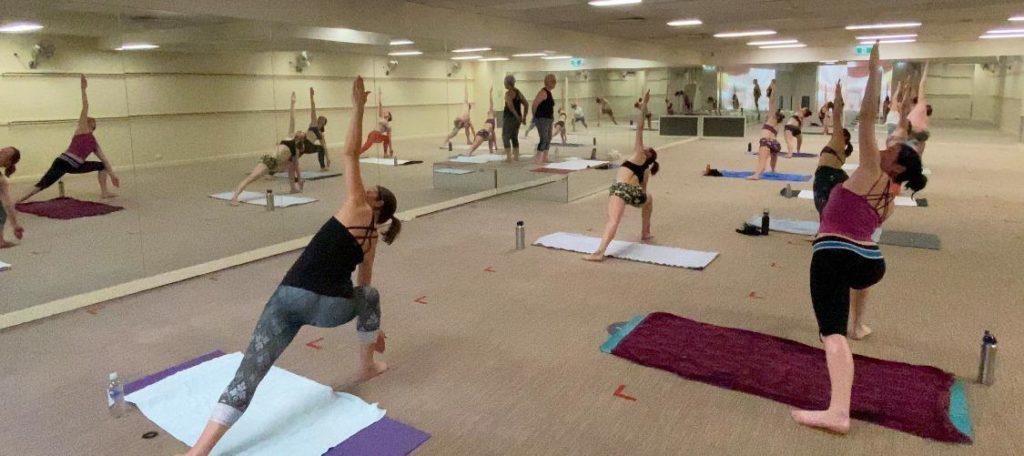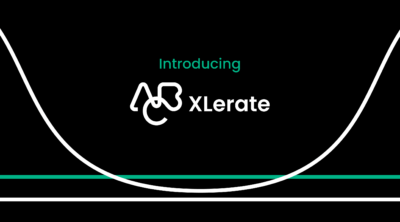There is no one-size-fits-all approach to gym membership prices. It’s a delicate balance of price point, value, and duration. There are various influencing factors that impact how much you should charge your members. Even after creating an amazing concept and going through the challenge of building an idea that is relevant in today’s industry, pricing your offering is hard.
With a variety of pricing structures from budget gyms to high-end boutique fitness, you have several options to consider. It’s no secret that consumers crave an increasing amount of flexibility and convenience in all aspects of life and your pricing will have to cater to this. In this article, we try to understand the different types of gym membership options you have and the steps to take to determine your pricing strategy.
Skip ahead to:
- What is the average gym membership price?
- What are the different types of membership options?
- 4 Gym Membership Price Examples from Well-Known Brands
- Choosing your gym membership pricing strategy
What is the average gym membership price?
It’s difficult to say what the average gym membership price is for your specific niche. Because there’s such a variety of businesses and price points, the average annual fee can vary massively between budget gyms to high-end boutique fitness experiences.
A recent survey by RunRepeat analyzed the prices of 16 popular US gym chains to find out the average gym membership price. Here’s what they found:
- The average cost of a monthly gym membership is $37.71
- The average cost ranges from $31.00 to $44.42
- Budget gym membership prices range from $40.00 to $70.00 per month
- High-end gym memberships range from $55.00 to $80.00 per month
The key difference between the costs of lower and higher-end facilities tends to be the perks. The majority of more expensive fitness memberships come with features like unlimited access to the pool, saunas, hot tubs, multiple gym access, basketball courts, locker rooms, showers, steam rooms, and other guest privileges.
What are the different types of membership options?
When it comes to your gym or health club, there are so many factors to consider. You can answer a lot of the questions you have by understanding who you are targeting. Your target audience and members have a massive role to play in determining the best pricing structure for your business. The aim of your membership pricing is to maximize revenue and profit. To do this, it’s a good idea to create a pricing structure with your intended audience in mind and your niche. Figuring out your pricing structure is a challenge that all organizations face. If you know the magic number you would like to achieve, understanding the different types of membership options can help you get there.
Monthly membership fees
A monthly membership fee is one of the most common types of pricing structures. For this, members pay a fee every month. Within this structure, you can get three or twelve-month contracts to be paid annually or monthly. You also have the option to go contract-free and charge a joining fee. Even though a monthly membership is a more traditional way of paying, it’s still a popular option that many members opt for. Some brands like LA Fitness offer monthly memberships as well as an initiation fee.
Pay as you go
The pay-as-you-go model is for members who don’t want to commit to a contract, monthly, or weekly membership. There is enough demand that customers can show up and pay for your services. The downside of this is that you don’t have guaranteed income from members. The upside is that it caters to members who don’t want to feel tied down to just one membership. For example, London’s Another Space has no membership or joining fee. You just buy credits for a class. One credit equals one class and you do yoga, HIIT, and cycle whenever you want.
Third-party subscription
The third-party subscription model has continued to skyrocket in popularity with the emergence of brands like ClassPass and Gympass. These types of services allow customers to access hundreds of different classes, gyms, and fitness brands. They have complete flexibility over where they work out and when. It’s important that gyms and fitness studios adapt their pricing structure to in-demand trends. ClassPass is also looking to target corporations by giving employees access to health clubs and gyms.
Dynamic pricing
Dynamic pricing means structuring your costs in terms of demand. So, your most in-demand time slot and class will cost more than an off-peak class on a Wednesday. You could also offer classes at a discount rate if they are purchased in bulk or a bundle. With this setup, managers and gym owners have complete control over the pricing. But to make it work, it’s important to have the right software in place to help you make intuitive decisions on pricing. That way, you can organize your dynamic pricing more efficiently.
Digital and physical hybrid
Many gyms and fitness businesses are now offering both in-person services and digital fitness. That means your pricing structure needs to adapt to this way of working. With the growing popularity of streaming fitness classes and home gyms, it’s normal to have in-person memberships, digital memberships, and a combination of the two. To build a successful hybrid gym, customers can pay to access both services. The benefit of this is that you still make money, whether a member visits you in person or streams your latest class at home.
For expert insight, listen to this episode on The Fitness Founders Podcast on how businesses need to learn to go hybrid or get left behind. Industry experts talk about how to package your online services and how to price your new offering.
4 Gym Membership Price Examples from Well-Known Brands
There is not a definitive answer for the best gym model pricing. It really comes down to your niche, type of business, services, and your members. While one model may be perfectly suited to a gym, another business may need a combination of pricing structures to meet member needs and demands. To give you an idea of different membership prices, here are four examples from well-known brands.
Planet Fitness
Planet Fitness is a budget fitness gym for those looking for a cost-effective and convenient place to work out. With a big national footprint, they are well-known within the fitness and wellness industry. It’s one of the most affordable gym memberships with facilities like free weights, cardio equipment, treadmills, weight machines, and other strength training equipment.
Membership price breakdown:
The Top 10 Barriers
Slowing Your Fitness
Business Growth
Discover more - $10/month – access to your home club, free wifi, access to facilities, and some discounts
- $22.99/month – the PF Black Card membership gives you access to any Planet Fitness clubs, plus facilities and discounts.
24-Hour Fitness
24-Hour Fitness is one of the largest gym chains in America. They offer studio classes, digital fitness, personal training, and access to a growing community. You have options to choose from your local club, regional, or national gyms, depending on your budget. The main difference with 24-Hour Fitness is that they are available and open 24 hours a day.
Membership price breakdown:
- $56.99/month – plus an annual fee for access to all clubs
- $51.99/month – with an annual fee for access to regional clubs
Orangetheory Fitness
Orangetheory Fitness is known for its one-hour group exercise classes focused on endurance, strength, and power. It uses heart-based interval training sessions to maximize every workout. With exclusive heart rate monitoring technology, Orangetheory Fitness continues to grow into a massive name in the fitness industry. The price can vary from one location to another with three levels of memberships and the option to buy class bundles.
Membership price breakdown:
- $59/month – $159/month – the monthly membership price ranges from a basic plan of four classes per month to unlimited classes
- $199 – a bundle of 10 classes
- $28 – drop-in price for one session
F45 Training
F45 Training is a boutique fitness brand that focuses on high-intensity group fitness classes. It’s 60 minutes of strength, cardio, agility, speed, and power. With F45 Training, each studio is individually owned and has varying prices depending on location. An F45 Training studio usually has free weights, battle ropes, sleds, and medicine balls. To give you an idea of pricing, here’s the cost of a New York location.
Membership price breakdown:
- $179/month – ongoing monthly contract for unlimited access to classes
- $120/month – 8-month contract
- $250 – one-off cost for 10 classes
- $35 – drop-in rate for one class
Choosing your gym membership pricing strategy
It’s clear the right gym membership price and structure depend on your niche and type of business. As you can see, there’s a huge range in price points and pricing structure across various fitness businesses. To figure out your pricing structure, here are seven steps to help you make the right decision.
1. Identify your source of revenue
To start, think about all the places you generate revenue. So, your memberships, classes, personal trainer services, and products. Break down all your sources of income so you can see where you will make the most money. From here, you can start to figure out which income stream should be the highest price.
2. Know your numbers
When pricing your memberships, you should know the money going out and coming in for your business. Calculate how much money you need to make each month or year to make your business financially successful. Think about margins and overheads and where all your money goes each month to keep the lights on. Determine how much money you need to make, so that you know where to begin.
3. Evaluate the competition
When deciding whether to join your fitness center or not, most members will investigate your competition. They want to find out if you offer the best value. By providing exceptional value with your gym pricing, you can beat out the competition. Survey your local competition and find out what memberships they offer and how much they charge. Be ready to explain why you have a certain price point and the value you bring that your competition lacks.
4. Understand your target audience
When you’re figuring out your pricing, your target audience and members will play a big role in your decision. Think about demographics, disposable income, hopes, fitness goals, and demands. Some customers don’t like the idea of being locked into a monthly contract, while others love it as it gives them the motivation to head to the gym. Understanding your target audience will set a good foundation for your pricing decisions.
5. Analyze your offering
Take a look at what you offer and how much your gym charges to make a profit. Then, think about what you can offer that drives value and allows you to charge a certain amount. The difference between a lower-tier gym and higher-end fitness facilities tends to be the features, perks, and overall experience. It’s important that you cover your operating costs, but at the same time, your members want to feel like they are getting something valuable out of the cost.
6. Test your pricing approach
Just because you decide on a pricing structure, doesn’t mean you have to stick with it. This is especially true if you’re opening a new gym. If you have two different approaches, you can test them in the first month to see which one you should use. Often, a combination of pricing structures works well. You can see this in brands like F45 Training and Orangetheory Fitness where you have the option to have a contract, but you can also drop in to a class. Having an option with no strings attached and commitment is hugely beneficial for some businesses.
7. Market your pricing
After choosing your pricing structure, it’s a good idea to package it in a way that’s easy to understand. Keep things simple and be completely transparent. This could look like a 3-tier membership model, flexible contracts, digital-only memberships, and including joining fees within your price. Break down the value for your price and show potential customers exactly what they can expect from you.
In summary
Setting your price point and driving value through your membership costs contributes to your financial success. By following these steps and evaluating your competition and offers, you can determine your membership price that’s tailored to your target audience. There is no one perfect pricing model for all businesses. You can mix and match these pricing models to different businesses to find something that works for you and your customers.















